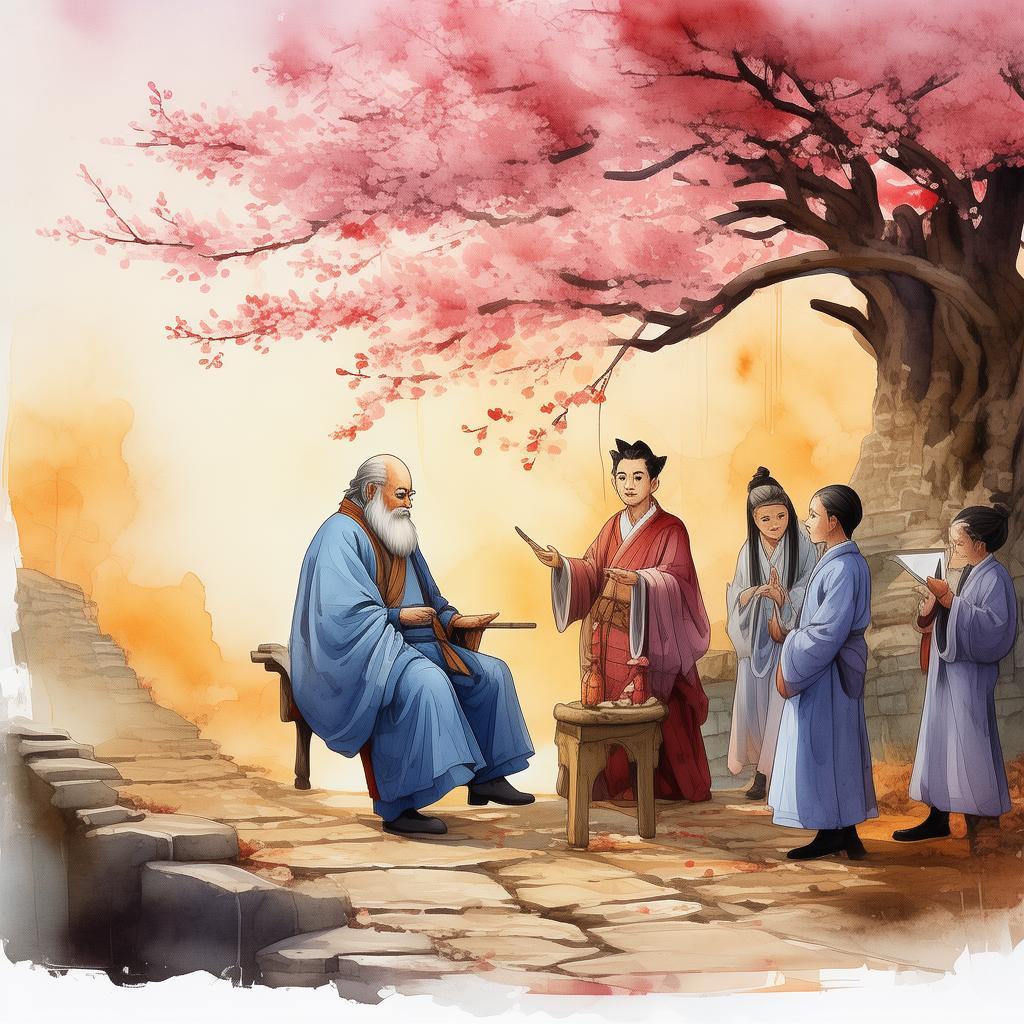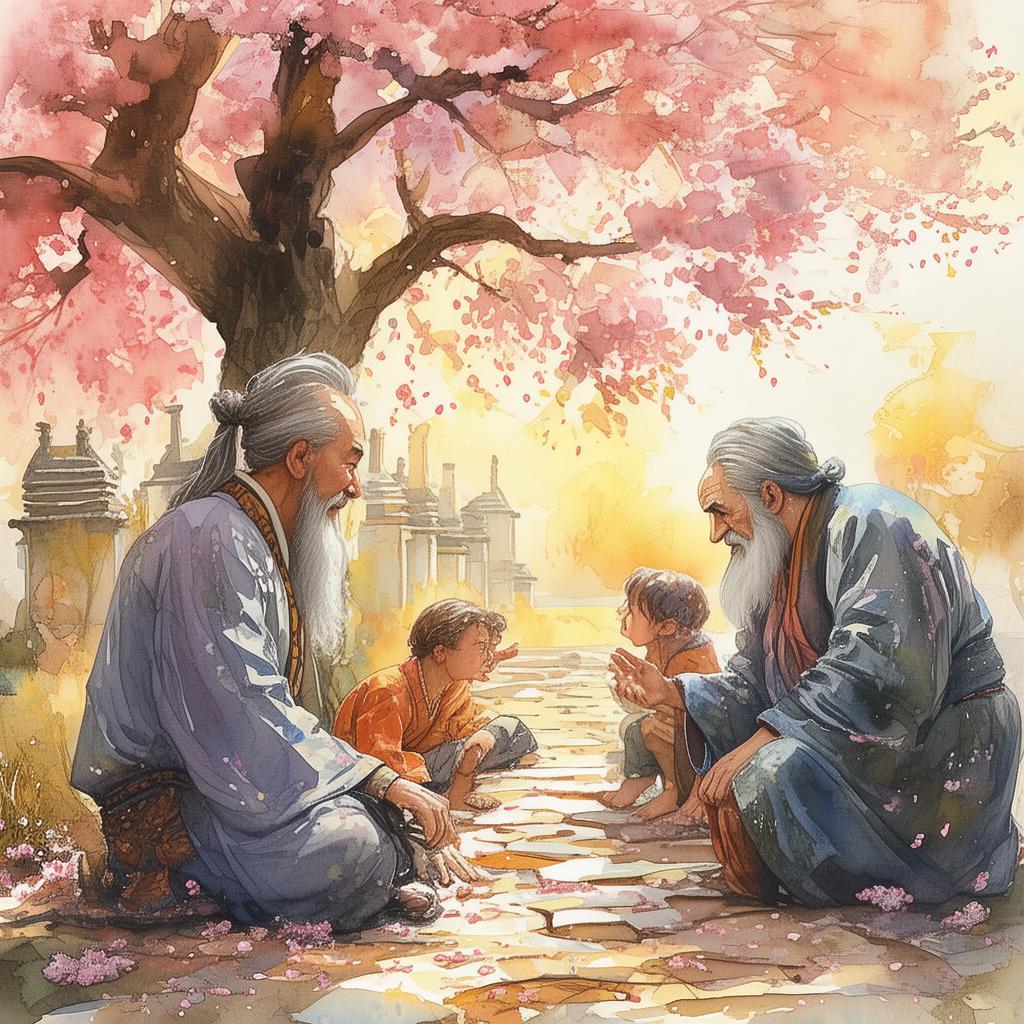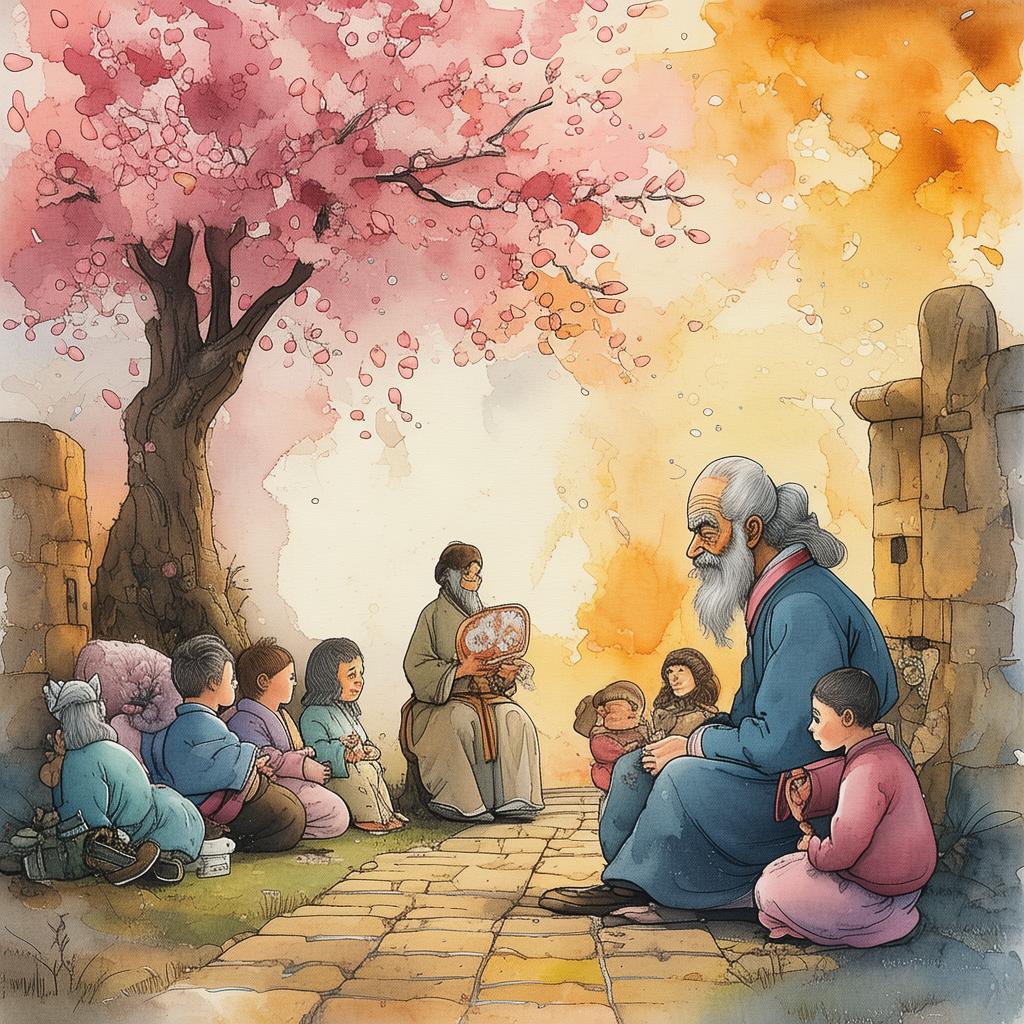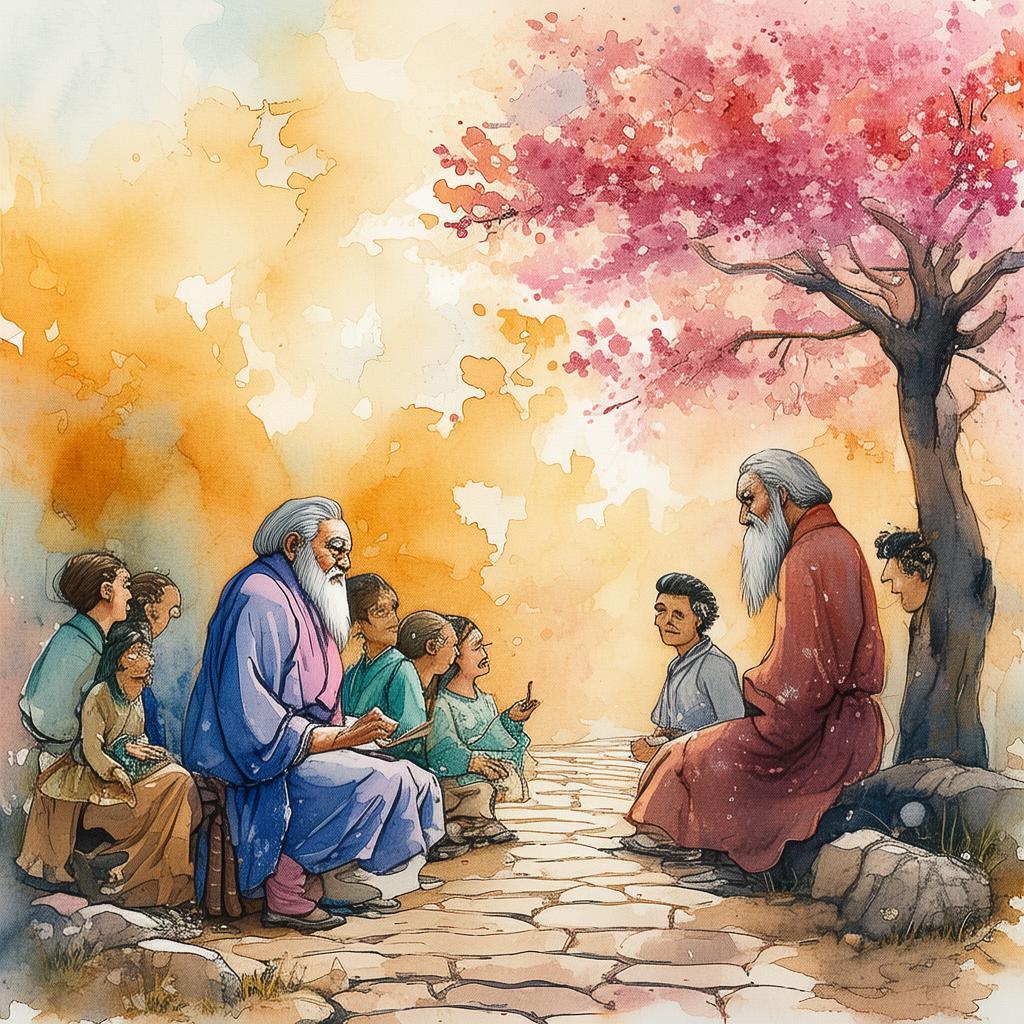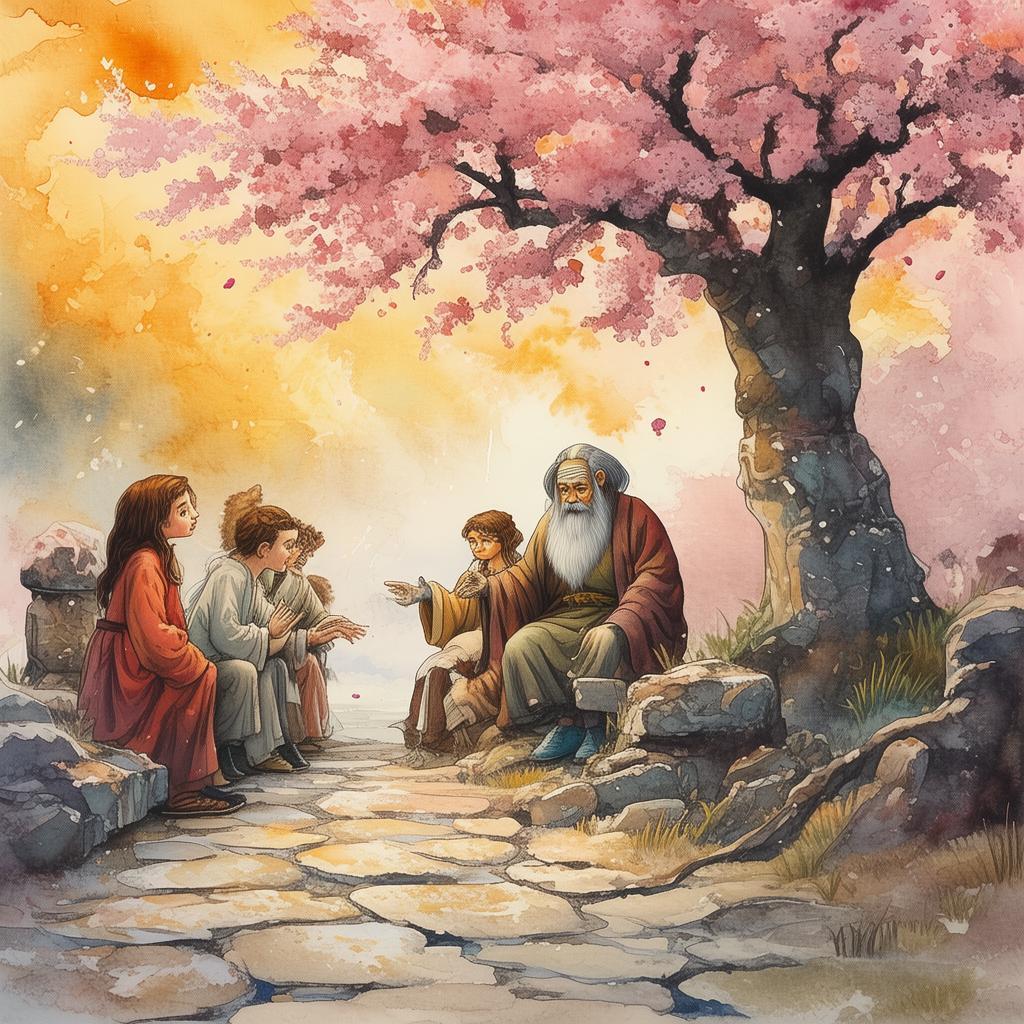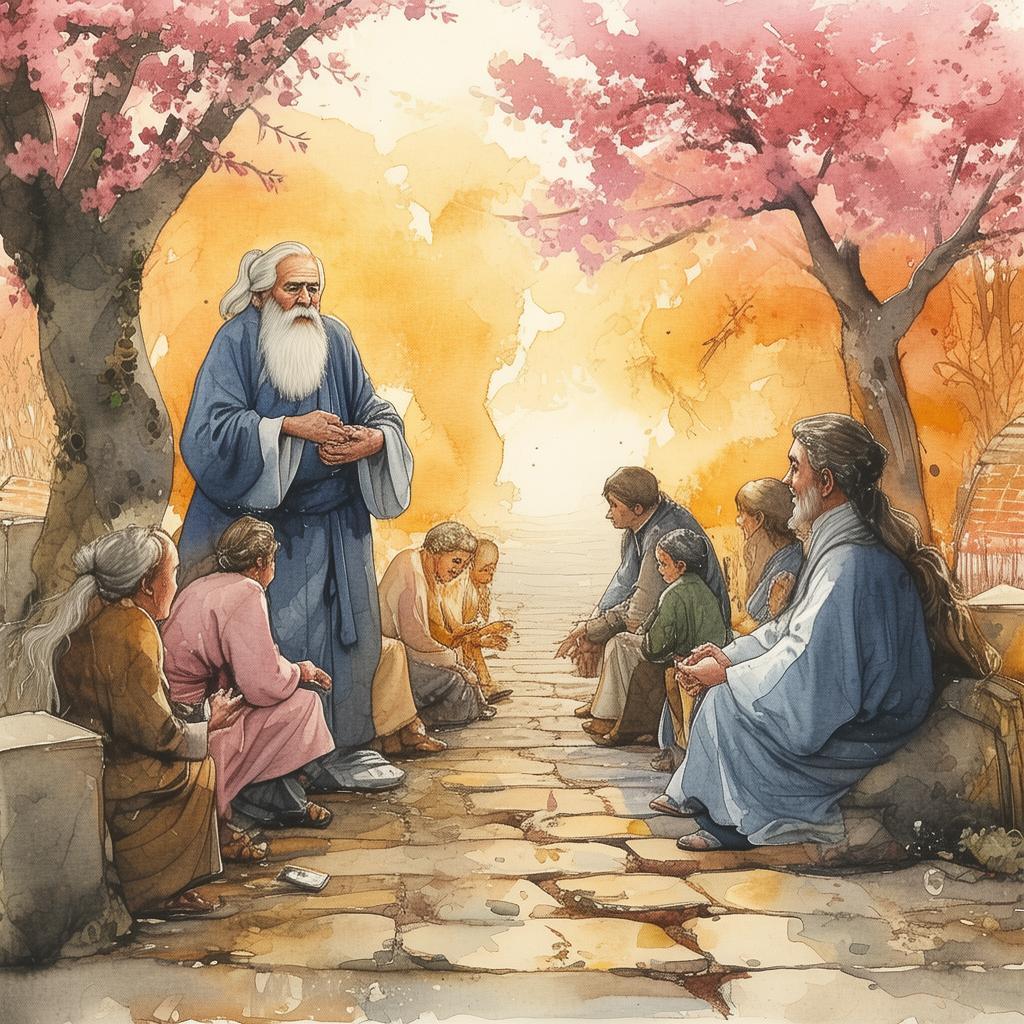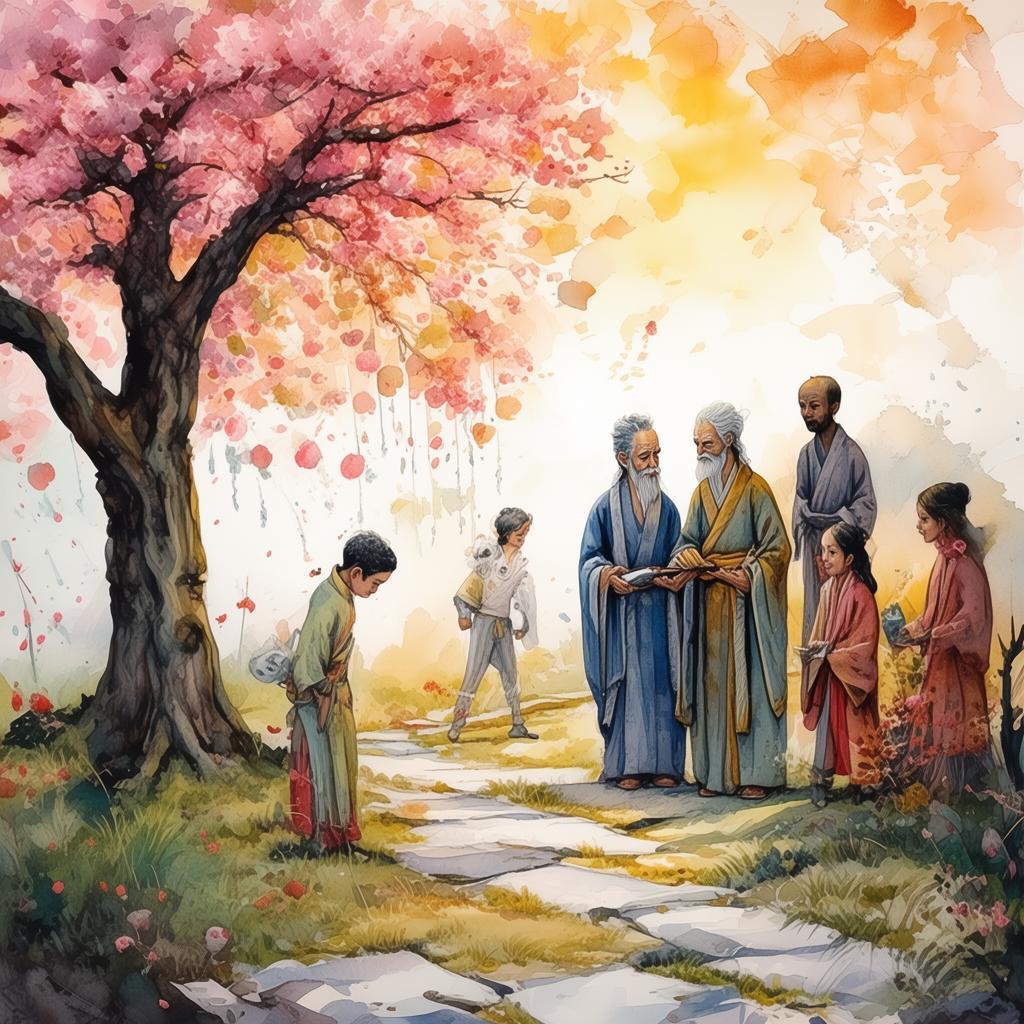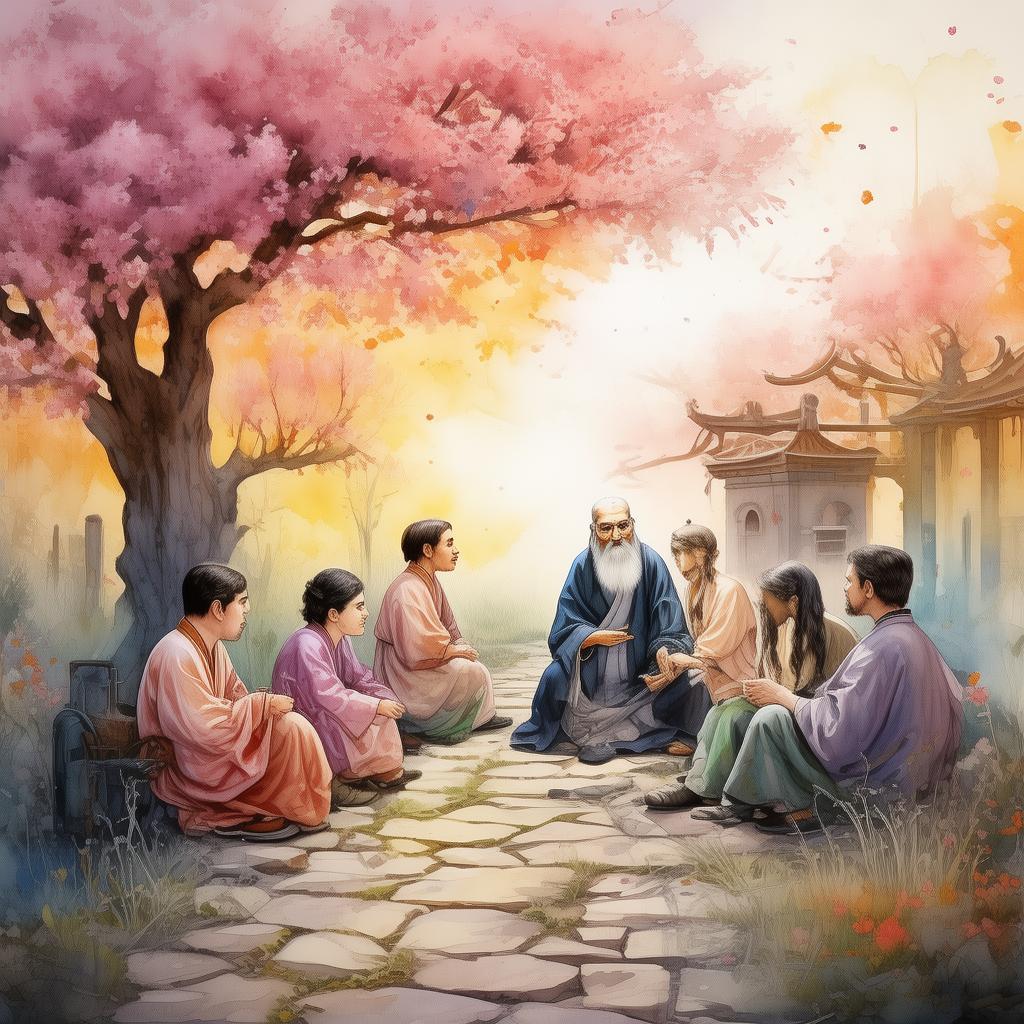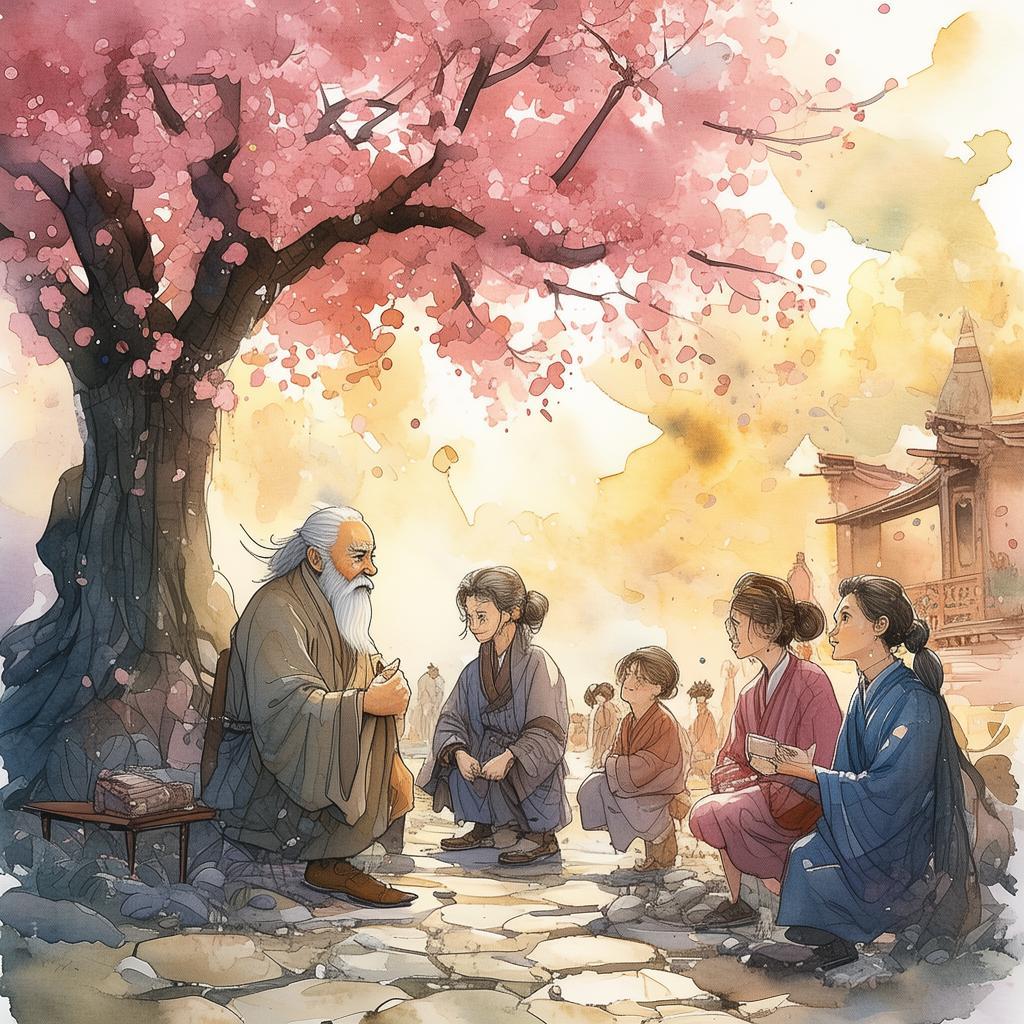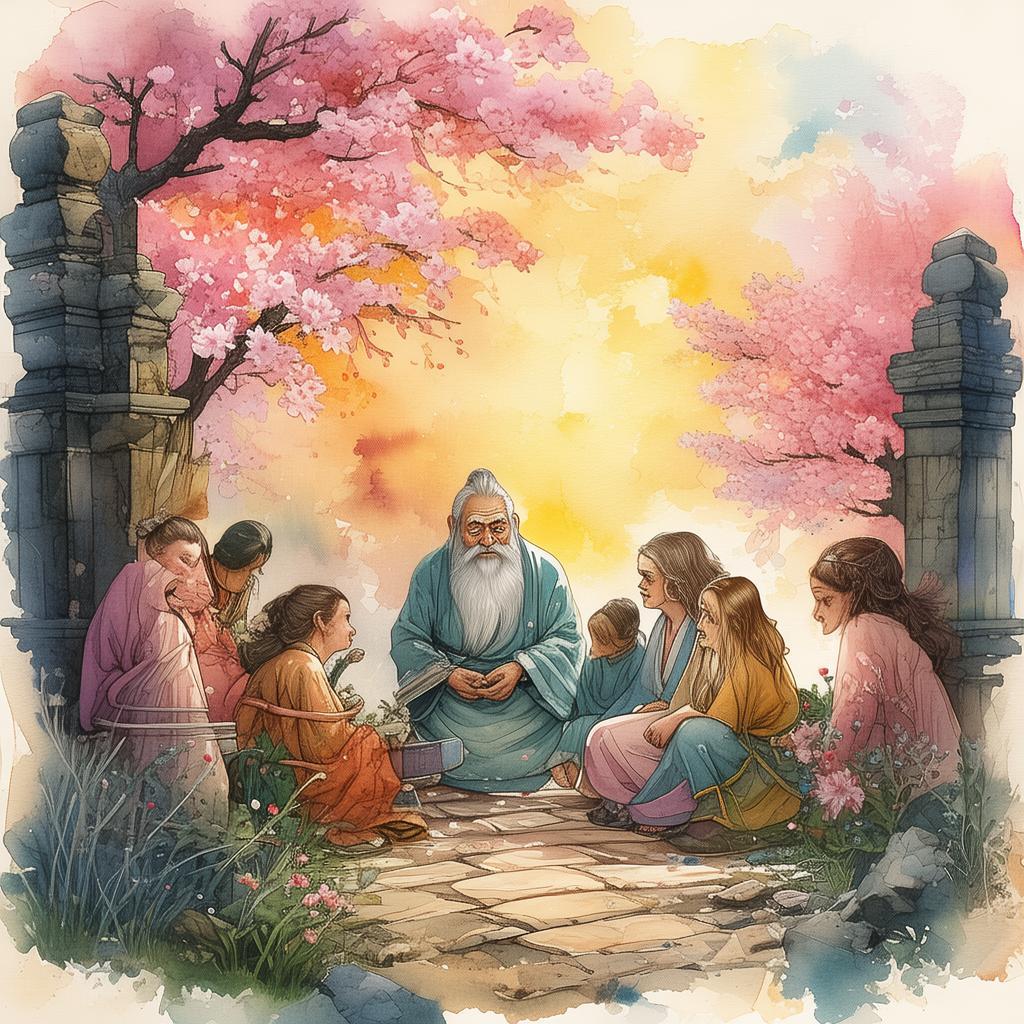The Time-Traveling Pen's Riddle: A Journey of Fate and Destiny
In the bustling streets of the ancient Chinese capital, there lived a young scribe named Ming. He was known for his exquisite calligraphy and his unwavering dedication to the art. His father, a revered scholar, had instilled in him a deep respect for the wisdom of the ages, and Ming often found himself lost in the scrolls of ancient texts.
One fateful morning, as Ming was sketching a character, a peculiar pen fell from the sky, landing at his feet with a gentle thud. It was unlike any pen he had ever seen, intricately carved with ancient symbols and a strange, glowing core. The pen was accompanied by a parchment with a cryptic message:
"Seek the inkling of eternity, the pen that writes without end. Answer the riddle, and your fate shall intertwine with the destinies of the past and future."
Curiosity piqued, Ming picked up the pen and the parchment. As he held the pen, it began to glow even brighter, and the symbols on the parchment seemed to come alive. The pen wrote itself, forming a single word:
"Riddle."
Ming knew this was no ordinary pen. It was a time-traveling pen, a legendary artifact said to be imbued with the power to transport its user through time. But it came with a catch: it could only be used to solve riddles that were as timeless as they were enigmatic.
Determined to uncover the truth behind the pen's power, Ming set off on a journey that would take him through the corridors of history. His first stop was the Great Wall of China, where he encountered a riddle left by a soldier who had lived in the Han Dynasty:
"The Great Wall, ancient and grand,
Protects the land, from afar.
What is it that cannot be seen,
But is always there to defend?"
Ming pondered the riddle for days, until a sudden insight struck him. The answer was clear: the Great Wall was a symbol of the people's unity, a force that could not be seen but was always present to protect them. He wrote the answer on the parchment, and the pen began to glow once more.
Next, Ming found himself in the bustling streets of the Tang Dynasty. There, he encountered a merchant who had a riddle for him:
"Two friends walk together,

One speaks, one listens well.
The one who speaks, never speaks again,
The one who listens, listens to all.
What are they, and where are they found?"
Ming knew the answer immediately: they were the eyes and ears of the state, the spies who listened and spoke on behalf of the Emperor. He wrote the answer on the parchment, and the pen's glow intensified.
As Ming continued his journey, he found himself in the midst of historical events, from the Opium Wars to the Boxer Rebellion. Each riddle he solved brought him closer to understanding the pen's true purpose. The last riddle, however, was the most difficult of all:
"The inkling of eternity,
In the heart of man it dwells.
To find it, seek within,
The answer is the self."
Ming realized that the pen was not just a tool of time travel; it was a mirror that reflected the essence of human nature. He had to look within himself to find the answer.
In a moment of profound introspection, Ming realized that the answer had been with him all along. The inkling of eternity was the wisdom of the ages, the collective knowledge that had been passed down through generations. It was the power to learn from the past, to live in the present, and to shape the future.
With the final riddle solved, Ming returned to the present, his heart full of newfound understanding. He realized that the pen had not just taken him on a journey through time; it had also given him the power to connect with the past and influence the future.
The time-traveling pen was returned to its resting place, and Ming continued to practice his calligraphy, his heart now full of the inkling of eternity. And so, the story of the Time-Traveling Pen's Riddle became a legend, a tale of fate and destiny that would be told for generations to come.
Through his journey, Ming had come to understand the profound meaning of several Chinese proverbs:
- "The journey of a thousand miles begins with a single step."
- "The wise learn from others' mistakes, the foolish learn from their own."
- "A journey is best measured in friends, rather than miles."
Ming had learned that the true essence of life is found not in the passage of time, but in the wisdom and experiences gained along the way. And with the time-traveling pen, he had discovered that the past, present, and future were all interconnected, each moment a chance to shape one's destiny.
✨ Original Statement ✨
All articles published on this website (including but not limited to text, images, videos, and other content) are original or authorized for reposting and are protected by relevant laws. Without the explicit written permission of this website, no individual or organization may copy, modify, repost, or use the content for commercial purposes.
If you need to quote or cooperate, please contact this site for authorization. We reserve the right to pursue legal responsibility for any unauthorized use.
Hereby declared.
